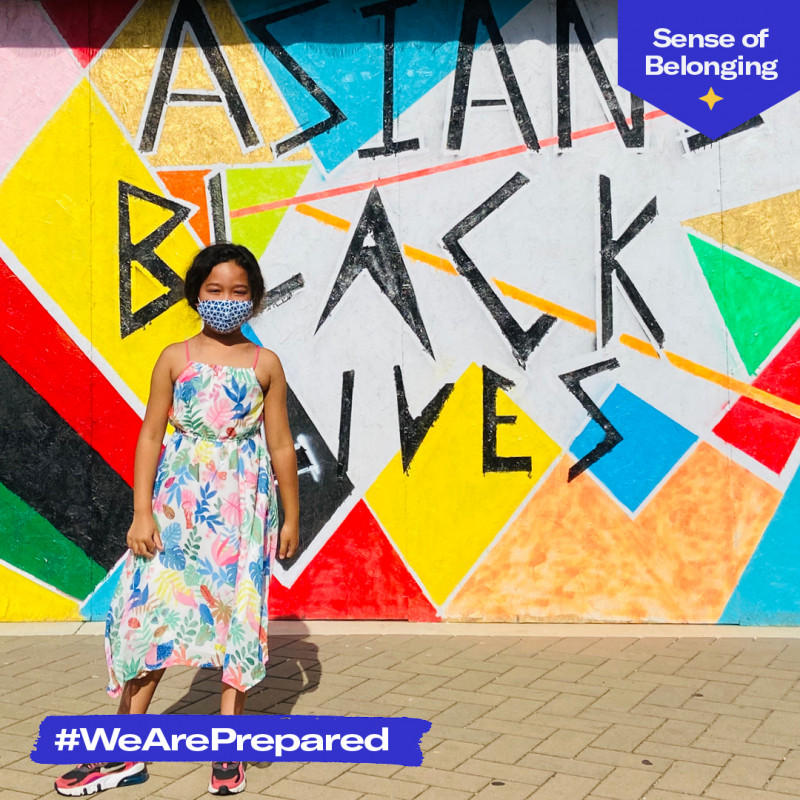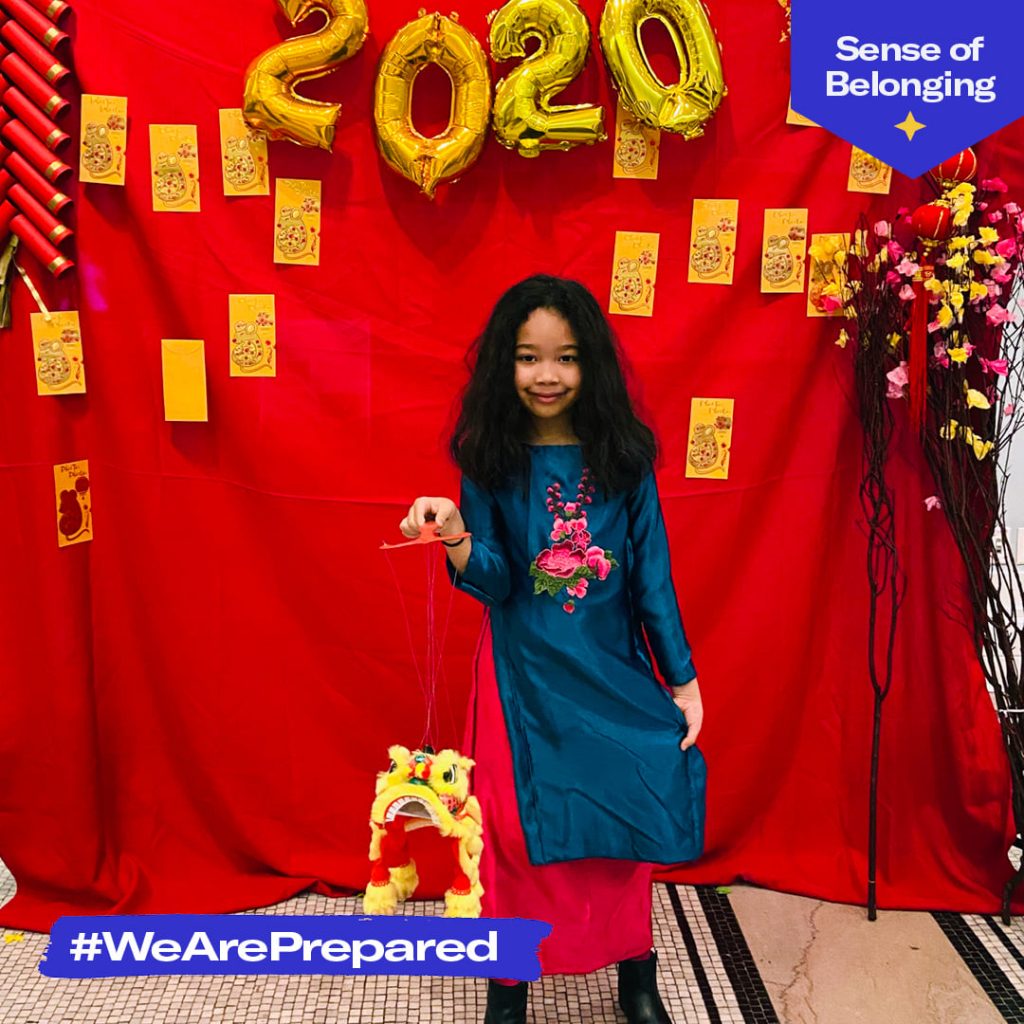“I try to keep a balance by including both cultures in the conversation. I’ve just started talking about my story of emigrating here with my mom when I was three as political refugees after the fall of Saigon because I think 7 or 8 is the right age for her to start to understand. I don’t talk about Communism or political strife, but I tell her that life was difficult in Vietnam and my mom made the supreme sacrifice to leave her country and her family and risk our lives for a better future for me.
Sloan’s dad was raised in Tennessee and she spends a good chunk of every summer there with her grandparents. My father-in-law is a Baptist minister and religion is actually another cultural layer to our story because I was raised Buddhist.”
“This year more than ever we’ve focused on the topic of social injustice. With Black Lives Matter activity right outside our window in Brooklyn, we saw all the protests happening and at her school, they talk about social justice and inequality. We talk about social injustice as it relates to Black history, but also try to personalize it for her. Her grandparents went through segregation when they were growing up so I can contextualize what’s happening for her.
The tension for me is that I haven’t reconciled the discrimination I’ve felt with what Black Americans deal with. My mom was the subject of ridicule as an Asian immigrant who didn’t speak English very well and was made fun of because of the way she dressed. And even though they’re important stories to tell, right now it’s important to discuss the racial injustice experienced by Black Americans because of its prevalence and atrociousness.
When Sloan was 6 I asked her, “Daddy’s African American and mommy’s Vietnamese. How do you see yourself?” She immediately said that she is Black. I thought it was interesting that she identified herself as Black, not brown – the tone of her skin – or that she was both. She’s already identifying as Black even before we’ve haven’t had a conversation about racial identity at that point.
I think it’s important to try to strike the balance where one culture doesn’t overshadow the other. She’s able to navigate all different cultures and situations and she has a good balance of friends from different ethnic backgrounds.
I want Sloan to grow up without the Barbie beauty ideal – blond hair, blue eyes – which is what I believed was beautiful when I was in high school. I make sure that the dolls she has represented different skin tones and cultures, so she has multi-cultural dolls – white dolls, Black dolls, Asian dolls. I‘m very keenly aware and protective of her feeling that she’s beautiful just the way that she is.”
– Lan in Chicago





